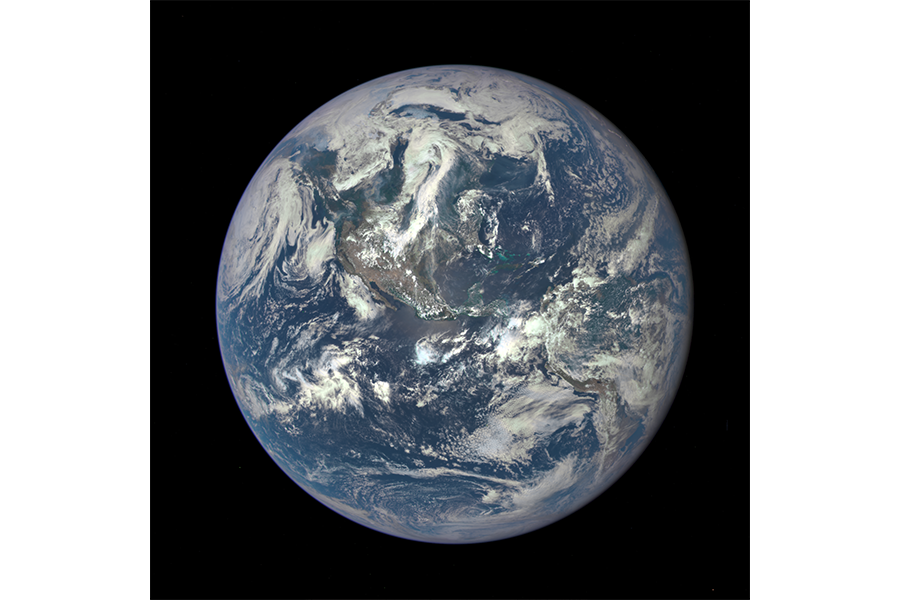The new Blue Marble: Earth like you've never seen it before ... sort of
On Monday, NASA released an updated version of what is perhaps the most iconic photograph in human history, the Blue Marble.
The first Blue Marble, a photograph snapped from space of the planet Earth in its entirety, was first released in 1972 by the crew of the Apollo 17 spacecraft. It is now believed to be one of the most reproduced images of all time. Since then, many composite photographs of the Earth have been produced, shared, and studied, but single shots capturing the whole Earth in all its glory have been a rarity.
“Composite imaging is an extremely useful tool for helping people understand the Earth – they allow researchers to capture certain features at higher resolution; reduce the obscuring effect of cloud coverage in certain areas; and overlay various data layers to help identify patterns and trends,” NASA astronaut Scott Kelly wrote on the White House's page on blogging site Medium.
“But there’s something remarkable about a single snapshot of the Earth – an intact view of our planet in its entirety, hanging in space.”
Now, the DSCOVR satellite, a mission launched by NASA, the National Oceanic and Atmospheric Administration (NOAA), and the US Air Force, has released an updated Blue Marble, and it will continue to release more throughout the coming year.
The DSCOVR mission launched in February 2015 and spent months in space before settling into its final orbit position, about one million miles above the Earth, in June. It will now provide important data on heat and radiation changes across the Earth’s atmosphere, allowing scientists and meteorologists to more accurately predict space weather events and better understand the Earth’s properties such as ozone and aerosol levels, cloud coverage, and vegetation density. Meanwhile, new Blue Marbles will be transmitted every few hours.
And those interested will be able to sift through the data themselves.
“One of the best parts of this mission is that NASA will make all of the data, data products, and images collected by DSCOVR freely available to the public, including the new 'Blue Marble' images. Starting soon, you’ll be able to view and download new ‘Blue Marble’ images taken by DSCOVR every day,” Mr. Kelly notes.







